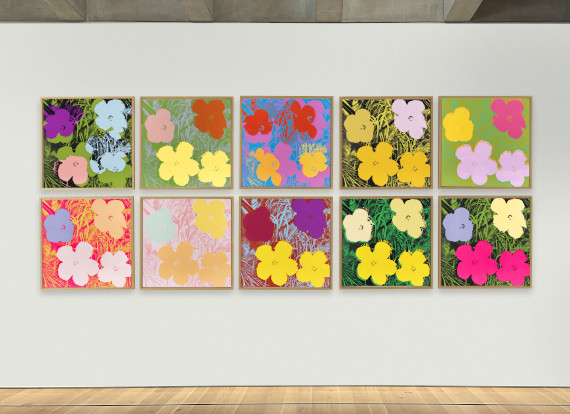Dictionary


Mezzotint
Mezzotint [Italian: "mezzotinto" = half tint or half tone] is a relief printing process that makes use of abrasion. Invented by Ludwig von Siegen in 1642, mezzotint had its heyday in 17th and 18th century English portraiture; hence the designation "the English manner". Unlike copperplate engraving, which consists of lines, mezzotint models a representation in exquisitely modulated light-and-dark tonal areas ranging from deep, velvety black to the white of the paper itself. To prepare for printing, the plate, which is made of smooth copper, is abraded all over by moving a rocker (or cradle), whose curved front edge is serrated, across its entire surface with a vigorous undulating or rocking motion. The plate is thus covered with a uniform network of cuts. Viewed under the magnifying glass, the points at which the cuts made by the rocker intersect look like minuscule crosses or asterisks. In this condition, a print on paper would have a uniform, velvety black surface. The representation to be printed is applied by the artist using a scraper (and a burnisher) to polish the places to a gloss which he wants to have light. The more highly polished, the lighter the printed tone of the mezzotint. The representation is, therefore, made to emerge from the dark. When the plate is inked, the copper takes up more or less ink depending on how smooth or rough it is and this is how the modulated and painterly effect characteristic of the medium is created in the print. Moreover, all grey values of velvety color tones can be achieved in mezzotint.
Mezzotint [Italian: "mezzotinto" = half tint or half tone] is a relief printing process that makes use of abrasion. Invented by Ludwig von Siegen in 1642, mezzotint had its heyday in 17th and 18th century English portraiture; hence the designation "the English manner". Unlike copperplate engraving, which consists of lines, mezzotint models a representation in exquisitely modulated light-and-dark tonal areas ranging from deep, velvety black to the white of the paper itself. To prepare for printing, the plate, which is made of smooth copper, is abraded all over by moving a rocker (or cradle), whose curved front edge is serrated, across its entire surface with a vigorous undulating or rocking motion. The plate is thus covered with a uniform network of cuts. Viewed under the magnifying glass, the points at which the cuts made by the rocker intersect look like minuscule crosses or asterisks. In this condition, a print on paper would have a uniform, velvety black surface. The representation to be printed is applied by the artist using a scraper (and a burnisher) to polish the places to a gloss which he wants to have light. The more highly polished, the lighter the printed tone of the mezzotint. The representation is, therefore, made to emerge from the dark. When the plate is inked, the copper takes up more or less ink depending on how smooth or rough it is and this is how the modulated and painterly effect characteristic of the medium is created in the print. Moreover, all grey values of velvety color tones can be achieved in mezzotint.
Offers
Headquarters
Joseph-Wild-Str. 18
81829 Munich
Phone: +49 89 55 244-0
Fax: +49 89 55 244-177
info@kettererkunst.de
Louisa von Saucken / Undine Schleifer
Holstenwall 5
20355 Hamburg
Phone: +49 40 37 49 61-0
Fax: +49 40 37 49 61-66
infohamburg@kettererkunst.de
Dr. Simone Wiechers / Nane Schlage
Fasanenstr. 70
10719 Berlin
Phone: +49 30 88 67 53-63
Fax: +49 30 88 67 56-43
infoberlin@kettererkunst.de
Cordula Lichtenberg
Gertrudenstraße 24-28
50667 Cologne
Phone: +49 221 510 908-15
infokoeln@kettererkunst.de
Hessen
Rhineland-Palatinate
Miriam Heß
Phone: +49 62 21 58 80-038
Fax: +49 62 21 58 80-595
infoheidelberg@kettererkunst.de
We will inform you in time.




